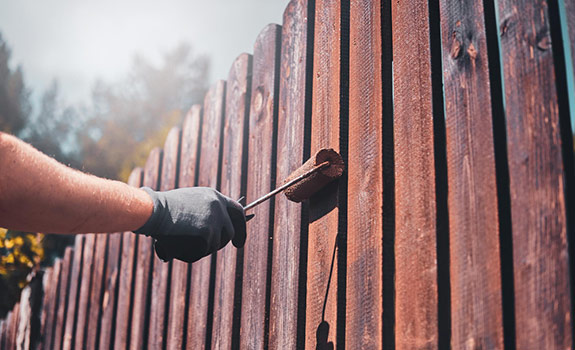Water heaters are necessary for homes, especially in areas with changing seasons. You wouldn’t want to take a cold bath or shower in the middle of winter. Maintaining the condition of your home’s water heater is just as important as taking care of your other appliances. But what if it starts leaking from the top?
Leaks are repairable and preventable. So, when you spot your water heater leaking, you must fix it immediately. The methods are generally easy and inexpensive if you understand the severity of the problem and its cause. You might also need a few tools for inspection, like plumber’s tape, a pipe wrench, and a stepladder. Knowing the cause will help you gauge whether you can fix it yourself, call a plumber, or replace your tank.
To get the upper hand in fixing a water heater leak, here’s a list of the possible causes and how to repair them effectively:
#1 Assess if the Leak Is Coming from the Top Seam
Most water heaters have an outer shell and an inner tank. The outer cover doesn’t have any water, and it provides insulation for the heater. If there’s leaking from top seam, it may be because of faulty threaded pipes. These pipes pass through the heater’s outer cover to its inner tank. When it leaks, the water is trapped in between the insulation. The bigger the leak, the more likely the insulation or the inner tank is drenched.
Leaks coming from the top seam are uncommon but pretty easy to fix. To solve this issue, first, drain the tank by about a third of the top. Then examine the threaded pipes and fittings for concerns like corrosion. If you consider that the damage isn’t that bad, you can hire a plumber to repair the pipes. But if it’s too severe, you have to replace your water heater.
#2 Observe Any Loose Pipe Fitting or Water Heater Nipples
If you spot your tank leaking, you may need to inspect the water inlet and outlet fittings or the heater’s nipples. Leaks are common on these parts because they sometimes loosen up due to pressure. Getting your wrench to tighten the fittings could be the solution to solve a stubborn leak.
However, if the fittings are not only loose but corroded, it’s best to have these replaced as soon as possible. Thoroughly investigate this issue to consider whether you need professional help or not. If your fittings are made of copper and need replacement, they need soldering by a plumber.
#3 Check the T&P Valves
Water heaters have temperature and pressure (T&P) relief valves to protect them from overpressure. Steam is released through the valves to prevent the tank from exploding. You can find the valves on top of the heater or, for some models, on the side. Because of their job, it’s common to have some leaking from them the older they get. Hence, replacement is the usual answer to this issue.
Fixing old or damaged T&P valves might pose a challenge if you do it independently. If you examine your water heater and find corroding areas, it’s wise to look for a professional plumber to repair it. Depending on the severity or other possible issues, you might have to replace the water heater entirely.
#4 Look for a Drip from Above
If your water heater is leaking from the top, the water may not have come from your device. Check the water pipes above your heater and the water supply lines. These lines can become faulty over time.
It’s also possible that rainwater is the actual reason. Rain could seep through the ceiling and drop onto your heater, making it look like the leak is an internal cause. It’s not a weighty issue since you can find ways to seal and protect your ceiling from seeping rainwater. But you will have to clear the water from the top of your heater to prevent possible corrosion.
#5 Examine Instances of Condensation
Heaters go through the process of heating cold water for your bath. Thus, you can expect water to accumulate when the airborne vapors surrounding it turn into liquid. Condensation is typical for devices like these, so there’s no need to worry too much. The water will evaporate on its own. But if the water accumulation is consistent, you must examine your heater to ensure there’s no leak.
If you have a heater running on gas, the water could come from its vents. Cleaning the vent should help solve the issue if something is blocking it. Don’t forget to shut the heater off first before you do this.
#6 Inspect the Anode Rods
Older tank models have an anode rod, a thin bar that prevents corrosion. It may also cause a water heater to leak from the top. The rod’s screw can loosen and create issues for the tank. Without the rod, corrosive agents will eat the tank from the inside out, making an opening above it and causing leaks. If not the tank, then they will eat the threaded pipes instead.
Fortunately, anode rods are easily replaceable should they fail at their job. Change your faulty rods as soon as you see them, or else your tanks could suffer severe damage. Taking the initiative to fix your heater immediately will lengthen its lifespan. But if you find yourself going to the basement to repair your heater every time it leaks, you may want to consider a tankless water heater. It may save you more money and time while still getting that hot water you need.
Conclusion
Most water heaters leak; it’s inevitable. But luckily, leaking from the top of the tanks is simple to repair if you know what to do. Some issues may be too difficult to fix, so replacements are your only option. In other cases, hiring professional help is your best bet. An experienced plumber will improve the condition of your tank and may make it last longer.
Published in: Home advice | Author: Lynn








